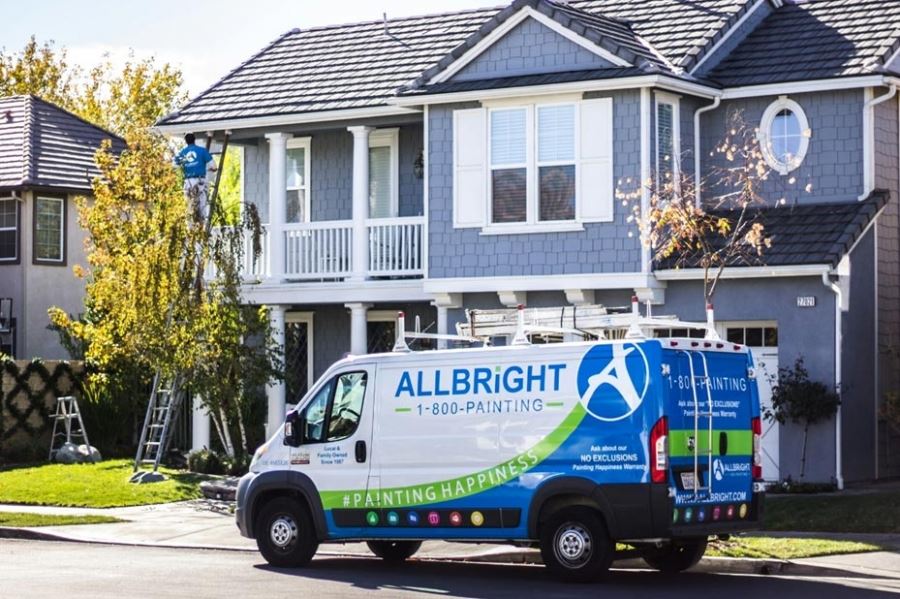
Making The Decision To Paint
The decision to paint is full of emotions and excitement, and many homeowners living in Greater Los Angeles dive in quickly, anxious to get the project started so they can make important changes to their homes.
While we completely understand the thrill of a painting project (after all, we believe in Painting Happiness!) we also think it’s important to take a rational approach. Painting is a process and if the excitement causes you to skip important steps, the end results will suffer.
To help you out, we’ve created this comprehensive guide with everything you need to know to plan and prepare for your next painting project. Use this guide to follow important steps in the process, and you’re sure to be pleased during the final walkthrough.
The entire guide should take you around 13 minutes to read (yes, we timed it!). If you’re rushed for time but would still like the information, you can get the complete guide in PDF format that you can read at your convenience.
Download Your Free Guide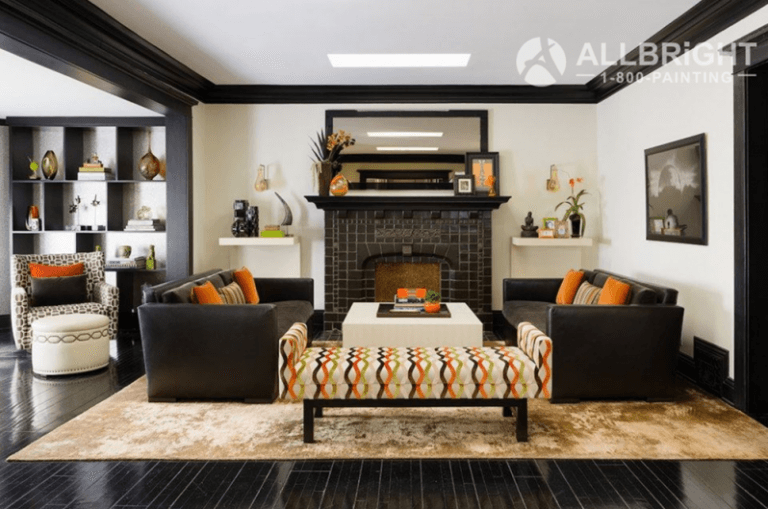
What Are The Benefits Of Painting?
There are many home improvement projects to choose from, so why is painting one of the most popular projects selected by today’s homeowners? Some of the benefits of painting include:
- It increases home value.
- It enhances curb appeal.
- It helps to protect the interior or exterior surfaces underneath.
- It can help hide permanent marks or stains.
- It is the most inexpensive remodel.
- It contributes to the positive energy in the home and an improved outlook for the homeowner.
The last benefit is what we like to call Painting Happiness. The amazing transformation that a coat of paint can bring to your home means overwhelming joy and a renewed sense of pride in your home. New paint is the opportunity to start fresh and give your home a second life.

What Is The Painting Process?
As we mentioned above, painting is a process and it should be taken seriously. Some of the main steps in the painting process are:
- Before the Project
- Defining the Scope of the Project
- Getting Inspiration
- Researching Paint Contractors
- Getting Estimates
- Hiring the Right Paint Contractor
- Choosing Paint Colors
During the Project
- Prepping the Area
- Priming
- Painting
- Clean Up
After the Project
- Walkthrough
- Warranties & Guarantees
- Maintenance
- Touching Up Paint
- Annual Inspections
Throughout the rest of this document, we will look at each part of the painting process so you understand what to expect at each stage and can successfully execute your project.
Before the Project
The steps involved before the painting project begins are crucial in getting your project off on the right foot. These are the steps that homeowners are most likely to skip – of course because they are eager to jump right into the project itself. However, it is important that you take your time before the project begins to define the scope of your project, pick the right colors and designs, and hire the right painting contractor for the job.

Defining the Scope of the Project
At some point, something sparked your idea to take on a home painting project. It might be that it’s simply time to repaint, or you may feel like changing colors or designs, or you may have been inspired by a friend or family member who did a recent painting project. Whatever it is, you’ve decided to paint – and the first step is to design the scope of the project.
The main goals of this step are to define where you want to paint and how much work you want to tackle.
- Inspect the house room by room (or on all parts of the exterior) and write down all the areas you’d ideally want to paint.
- Don’t forget to consider all parts of that room (or exterior section) that need painting. It’s easy to focus on painting the walls, but also inspect the ceilings, cabinets and trim, and for exterior projects, the porch, the door, the shutters, the garage, etc. This helps you determine all the necessary parts of the painting project for each room.
- Now prioritize your list. Which rooms/areas need paint the most? Which areas do you want to paint the most? You’ll want to tackle as many things on the list as possible, but prioritizing your list will make it easier to match your wants and needs to your budget.
Defining the scope of your project is important because it will help you better communicate your needs to your painting contractor so you get a more accurate estimate and stay ‘on the same page’ regarding the project.

Getting Inspiration
Now on to a fun step, getting inspiration. Sudden inspiration may be the reason you decided to start your painting project, but it’s now time to dig in deeper to provide more details about what you want. You may start out with some basic color/design questions:
- Do I want to keep things about the same (color/design-wise), or am I looking for a more dramatic change?
- What are my favorite design styles – contemporary, traditional, modern, rustic, etc.?
- In terms of color, do I want bright and bold or muted and tame?
When you ask yourself these questions, you may want to think back at why you wanted to paint in the first place – your wants versus how the current home is not meeting those wants can direct the project.
After you have some basic ideas about design, style, and colors, you can seek out inspiration on the more specific looks you want to achieve with your painting project. You can get inspiration by searching online, looking through magazines, browsing Pinterest, watching home improvement shows, getting advice and inspiration from friends, and more.
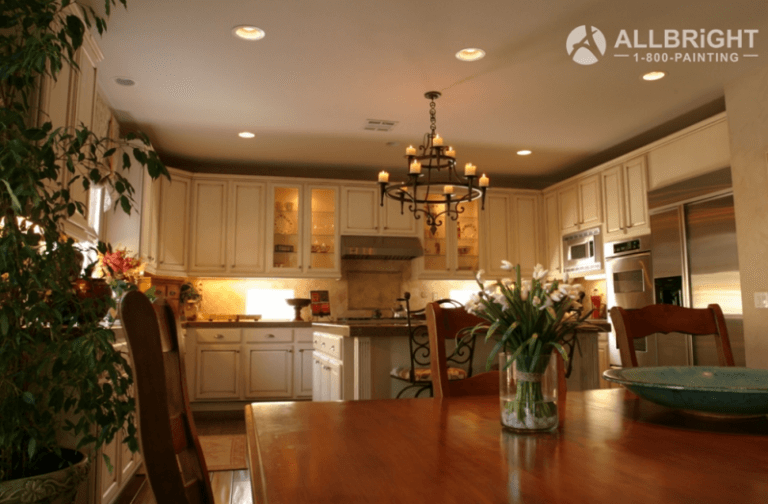
How To Research Painting Contractors
By now you have defined the scope of your project and gotten some basic inspiration. These steps are important because now you can communicate better with contractors – you can tell them exactly what you want to be painted and the look you are trying to achieve. Since you’re prepared to deal with contractors, now it’s time to research to find a few you’d like to pursue.
Like many steps on this list, researching contractors is an important step that many homeowners skip. Sometimes homeowners move fast (choosing the first contractor they find); sometimes they choose a contractor based on relationships (Company X is run by my brother’s friend); and sometimes they choose based on someone else’s experience (my best friend Mary used this contractor and she was happy with the results). These emotionally-based reasons can lead you to choose the wrong contractor, so it’s wiser to do the research first.
- First find a pool of potential candidates. You can find local painting contractors through online searches, home improvement websites like Houzz or service-based websites like Angie’s List.
- Next, look at ratings and reviews. You can find this information on sites like the Better Business Bureau, Houzz, Yelp, Google, and your local Contractors State License Board.
- Finally, you should also check each business’s website to learn more about their services and to view portfolio pictures of their past projects.
The point of the research is to determine what other people are saying about the company: do people recommend them, do they perform quality work and are they reputable. After conducting this research, you should be able to narrow down the candidates to a shorter list of painting contractors that you will request estimates from.
Getting Estimates
You will now call the top contractors on your list to get project estimates. During the estimate, you can give the contractor information that you gathered in previous steps, such as the project parameters and your design inspiration, so they understand your ideas and can give you an accurate estimate.

Remember that the estimate is a key point of contact before you choose a company and sign a formal contract. It is your responsibility to get all the information you need – and you’ll want to make your final decision based on more than just the final number in the estimate. Here are some questions you may want to ask:
- Is labor charged by a fixed price or by an hourly rate?
- How much of the estimate is for labor and how much is for materials?
- What kind of paint and materials do you use?
- Does this estimate contain X, Y, Z? (to make sure it includes all project parameters)
- Have you worked on projects like this before? How often?
- Do you offer any warranties or guarantees?
- Are you licensed and insured?
- What is the estimated timetable?
- What days or schedule will you keep for this project?
- How many people will be working on my project and what is their experience level?
In the “Researching Painting Contractors” step you were assessing the company in general; the estimating step is where you must assess their ability to successfully execute your specific project.
How To Hire The Right Painting Contractor
By now you have plenty of information – both from the researching phase and the estimating phase. It’s important that you use ALL of this information to hire the right painting contractor for your project.
It can be tempting to just look at the final numbers and select the contractor who gives you the lowest estimate. However, when it comes to painting work, you definitely get what you pay for. While the final estimate is an important factor, you want to look at everything together to find the painting contractor that has the right ‘package’ and who will do the best work.
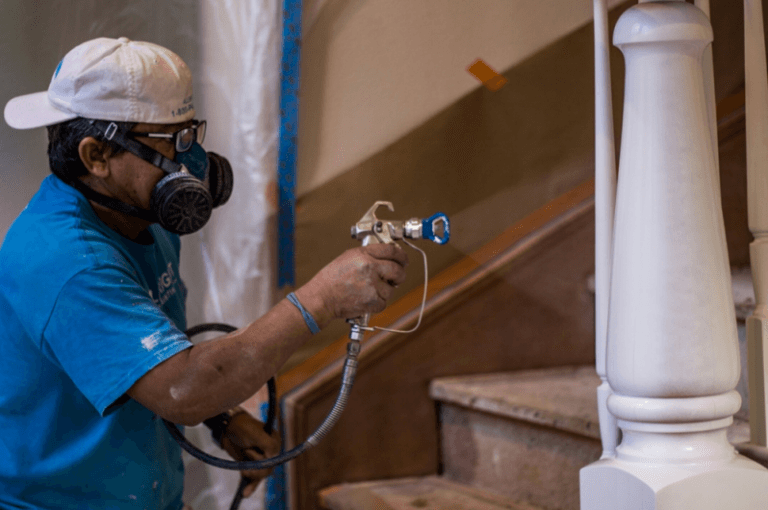
Choosing Colors
You may be surprised that we saved the choosing colors step until now. It is quite possible that you decided on colors during the “Get Inspiration” step, but we saved this step until after hiring the contractor because these days many contractors offer assistance in choosing colors. Professionally trained color experts can consult with you to offer suggestions on colors that match your home, your tastes, and your preferred design style. This service offered by painting contractors takes the guesswork out of what is typically a daunting task.

If instead, you are choosing colors yourself, here are some tips:
- Consult the color wheel to learn more about colors and how they work together.
- Consider the shade of colors. Are you trying to lighten the room up with a soft shade, or make a statement with a bold shade?
- Don’t forget the lighting of the room, which will impact how the color will actually look on the wall. Rooms with a lot of natural light will show the true color; incandescent lighting will bring out yellow and warm tones; fluorescent lighting will cast a blue tone.
- Look at adjoining rooms in order to choose colors that work well together.
- Consider the mood you are looking to achieve in the room. For example, blues create a relaxing space and yellows create an inviting and energizing space.
- Choose a paint finish. Different paint finishes have different amounts of glossiness, ranging from flat (no gloss or shine) to semi- and high glosses.
- Get inspiration from the neighborhood. Both interior and exterior should work harmoniously with the other homes of the neighborhood, capturing the same feel.
- Don’t be afraid to show personality. Your color choices should reflect your individual tastes and uniqueness.
Choosing colors can be overwhelming because there are so many colors to choose from. When you narrow down some of your choices, try using a color app, like those offered by Dunn Edwards, Benjamin Moore and Sherwin Williams. These apps will allow you to take a picture of your room then use digital painting tools to see how new colors will look.
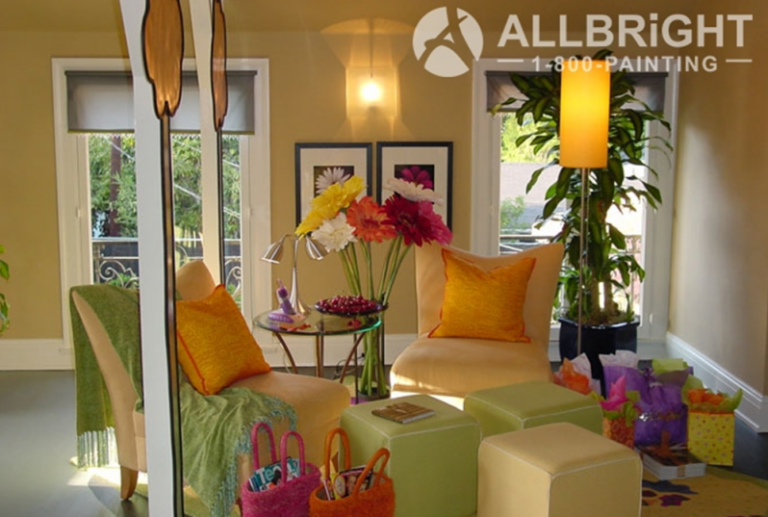
During the Project
This section on what happens during the painting project will be decidedly shorter than the previous section. The reason is that in the previous phase you selected the perfect contractor for your project, so now it’s time to sit back and let them perform the work! However, even though you will not be actively involved during the project, it is important that you understand the general process that the contractor will follow to complete the work.
During the project, you should also have the following expectations of your contractor.
- The contractor and any painting staff will respect your home and your personal belongings.
- The project will be carried out in accordance to the signed contract.
- The painters will do their job by following the proper safety procedures and best practices of the painting industry.
- The contractor will engage in active communication, keeping you informed of any changes or issues and answering any questions you have.
Now that you know what you should expect from your painting contractor, it’s time to look at what is going on behind the scenes as they work on your project.
Prepping The Area
Prepping the area is an important step that all professional painters begin with. Prep includes:
- Cleaning the surface to remove any dirt or debris.
- Removing wall hangings and moving them to a safe area.
- Moving furniture out of the way.
- Taping and putting paper or plastic on areas that are not to be painted.
- Covering the floor to protect it from paint drops.
Prepping the area is important because it will protect your home and belongings from any damage, and it gets the surfaces ready for priming and painting.
Priming
Priming is the process of adding a special coat of paint (called primer) to the surface to get it ready for the colored paint that will follow. In some cases, priming is not necessary, but often times it is a necessary step. For example, you should always prime new drywall, unpainted wood, patched drywall, as well as when you’re painting over glossy paints, covering stains or odors, and making major color changes. You should always rely on the expertise of your contractor to decide if priming is necessary. If they say it is, don’t try to cut costs by skipping it because it will likely impact the final results.

Painting
Painting is the step you’ve been waiting for, and the reason you may have wanted to skip all the other steps and jump right into things. We hope you understand the reason why the other steps are important, though – because by the time you get to this step you can be confident that you’ve selected the right color and will have it applied professionally by the contractor of your choice.

Painting may involve the use of various brushes and rollers, and it may involve one or multiple coats. How long the painting will take will depend on the specifics of our project, but reputable contractors will make sure to clean up daily and minimize any disruption to your household.
Cleanup
After the paint has been applied, inspected and any necessary touch ups have been made, the contractor will clean up the area. The cleanup step involves removing all tools and materials, taking the tape, paper, and plastic down, moving furniture back, and rehanging wall décor.
After the Project
Your painting project is now complete, and here is the moment you’ve always been waiting for – viewing the stunning transformation of your home and returning to life as normal where you can enjoy your home and see it in a new (and beautiful!) light. In addition to the project walkthrough, this section will also cover important information on maintaining and preserving your painted surfaces.
Walkthrough

The walkthrough is the final step where you “tour” your home with the contractor to view the work that has been performed. Most homeowners are thrilled with the final results of their painting project, and a walkthrough is an exciting event.
During the walkthrough, you will want to inspect the work to check the quality as well as to make sure that everything in the contract was completed. If you have any issues, now is the time to bring them up with the contractor. Professional and reputable painting companies want to please their customers, so they will likely try to resolve these issues.
If you’ve followed all the steps in this document, you are likely to be quite pleased with the results! After the walkthrough (or after any final issues are addressed) you should make the final payment if you have not done so yet. If you are happy with the work, it is also a kind gesture to offer to be a reference for the company or to complete online reviews. Remember that back in the “Researching Painting Contractors” step you used reviews to select your pool of potential contractors. After the walkthrough, you can ‘pay it forward’ to other homeowners by leaving reviews of your own.
Warranties & Guarantees
Many painting companies offer warranties or guarantees on their work. This should have been something you asked about in the “Getting Estimates” step and it also might have been something that was brought up during the walkthrough.
Painting contractors sometimes offer warranties on the materials or on the work they performed – and sometimes both. If your contractor offers a warranty or guarantee, make sure you get it in writing and save the documentation in a safe place.
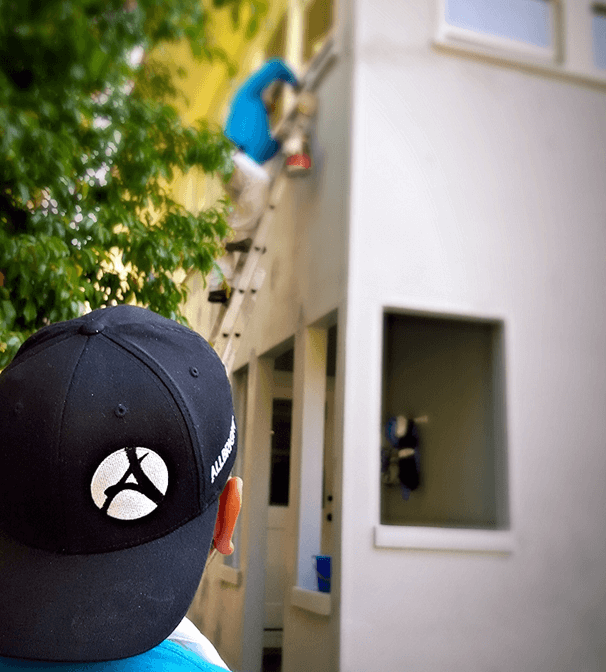
Maintenance
Now that you’ve said goodbye to the painting contractor, it’s important that you do what you can to maintain your painted surfaces. Typically your surfaces only need a periodic cleaning to be kept in good shape.
- For interior surfaces, use a soft cloth or towel and mild soap to make sure you do not scratch or discolor the paint.
- For exterior surfaces, power washing is the easiest and most effective solution.
Touching Up Paint
Over time, your painted surfaces may get chipped or scratched from the regular household activity. Unfortunately, touching up paint is hard to do because it is hard to get the exact color match. DIY experts recommend keeping the rest of the can of original paint (as there is typically a little leftover) and then diluting it 5-10 percent. Touching up the paint can be a risky venture, though, so you may consider calling the painting company, moving furniture or décor to block it, or simply living with the imperfection until you paint again.

Annual Inspections
Some painting contractors offer annual inspections of your painted surfaces after the painting project is complete. If your contractor offers this service, make sure to take advantage of it – but if not, you can conduct your own annual inspections.
In the “Defining the Scope of the Project” step, we recommended walking around your home – room by room inside and section by section outside – to take note of the condition of the paint. This is a good practice to do each year in order to keep your painted surfaces well maintained. From your inspection, you may notice areas that need cleaning or pressure washing. You also may notice chipping, scratches, bubbling, peeling or other issues that indicate you need to repaint. Conducting the inspections annually will allow you to submit warranty claims and help you predict when it’s time to repaint.

ALLBRIGHT 661-464-0771
We hope that the information in this guide is useful to you in planning and proceeding with your next painting project. After 28+ years in the painting industry and over 4000 completed painting projects, we understand that painting – although an emotionally joyful event – is also a process that you should take seriously.
For those of you who live in our service area (which includes Santa Clarita Valley, San Fernando Valley, Los Angeles, Ventura County and San Gabriel Valley), we’d love the opportunity to work with you on your next painting project! We offer:
- Interior house painting
- Exterior house painting
- Color consulting
- Cabinet painting & refinishing
- One-day painting
- Painting parties
At ALLBRiGHT 661-464-0771, we have worked hard to develop a reputation as the best painting contractor in our area. We have an impressive list of awards and credentials and are active members of our community. All of the photos in this guide are past projects of ours, and you can view even more in our portfolio. We are fully licensed & insured and back our work up with a “No Exclusions” Warranty and Happiness Guarantee.

Contact ALLBRiGHT 661-464-0771
Hopefully, the resources in this document will help you plan and execute your next project. ALLBRIGHT 1-800-PAINTING provides painting services to homeowners in the Los Angeles area, including Santa Clarita, San Fernando, and Ventura County. If you’re looking for a professional residential painting company you can trust, give ALLBRiGHT 1-800-PAINTING a call today.
